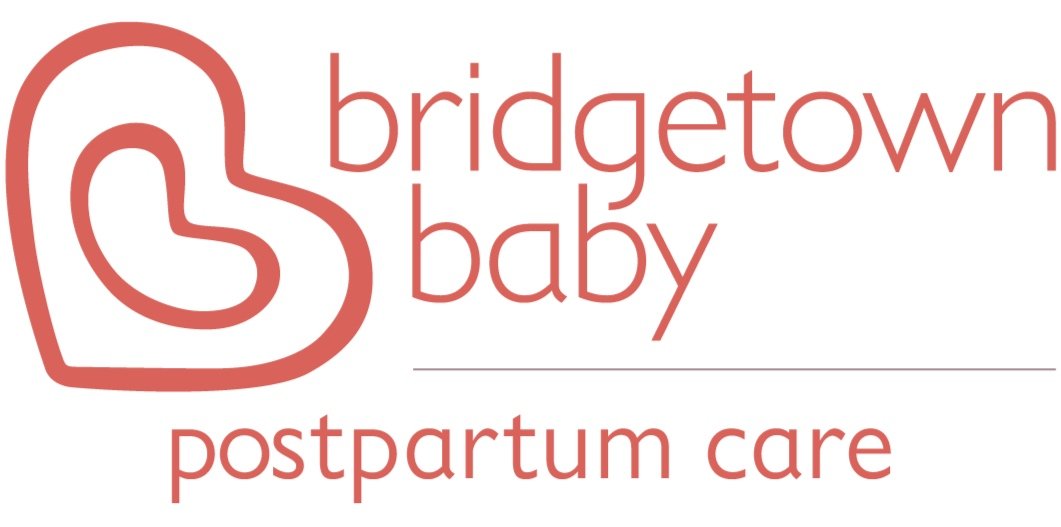Breastfeeding Tips for National Breastfeeding Month
by Alimah Hall, IBCLC, PCD
Alimah with a new mom. Photo credit: Brita Johnson
August is National Breastfeeding Month, a month when we celebrate the benefits of breastfeeding and work to ensure families have the support they need to reach their breastfeeding goals. In recognition of National Breastfeeding Month, Bridgetown Baby checked in with Alimah Hall, one of Bridgetown Baby’s IBCLCs, to ask her to share some breastfeeding tips.
1) Laid back positioning is my favorite nursing position, especially with very young babies. It is extremely comfortable for the nursing parent and it taps into baby’s feeding reflexes, helping baby get a deeper latch. Ask your doula or lactation consultant to help you!
2) To help position your baby for optimal swallowing, envision yourself chugging a glass of water. It’s easiest when your head is facing straight forward and your neck is extended, head slightly tilted back. Aim for this same positioning with your nursling.
3) For most breastfeeding parents, I advise skipping the expensive breastfeeding pillows and supports. Most often, bed and throw pillows, rolled towels and blankets, and other items you already own are sufficient for supporting you and baby during breastfeeding, especially if you are feeding baby in my favorite, laid back position.
4) Is baby squirming and struggling to latch? Take a look at their feet. If they are kicking or flailing in space, baby may not feel secure and have trouble getting down to the business of nursing. Try snugging their feet in to your body, or securing them with a receiving blanket or a pillow.
5) I encourage clients to learn to hand express their milk. It is an important skill to know if you ever find yourself in a situation where your pump either isn’t working or isn’t with you.
6) Every dyad is different and I approach each as unique individuals with unique needs, but there is one universal recommendation that is always a part of my care plan: Spend lots of time skin to skin with your baby. It helps calm fussy babies, promotes lactation hormones in your body, regulates baby’s neurology and body systems, and much more!
7) Breasts may resemble the target on a dartboard, but in order to get the breast well positioned in baby’s mouth, we’re not aiming for a bullseye. Rather, aim for an asymmetrical latch with baby’s upper lip closer to the nipple and lower lip farther away. To achieve this asymmetrical latch, start with baby’s nose aligned with your nipple and their lower lip far away from the nipple.
8) In the immediate postpartum period, try setting the expectation that you will be nursing a lot, as in most of the time. It won’t always be this way- babies become stronger and more efficient, but considering frequent nursing to be the norm can help it feel easier in those early weeks.
9) Don’t wait to get help. If breastfeeding is painful, baby isn’t gaining weight as hoped for, or your gut just tells you that breastfeeding isn’t going well, don’t delay reaching out for support. Addressing nursing difficulties early on is usually much simpler before they snowball into multi-layered issues.
Alimah is a certified Postpartum Doula and International Board Certified Lactation Consultant (IBCLC). Alimah's calm presence and warm spirit create a comforting environment in the homes of the new families she serves. Her desire is to support families in the precious and fleeting postpartum period, while empowering them to become confident in their own parenting skills. Alimah has a bachelor’s degree in elementary education, with endorsements in early childhood education and special education. In her free time, she enjoys being in nature, drinking tea with her teenage daughters, and dreaming up the next big road trip.

